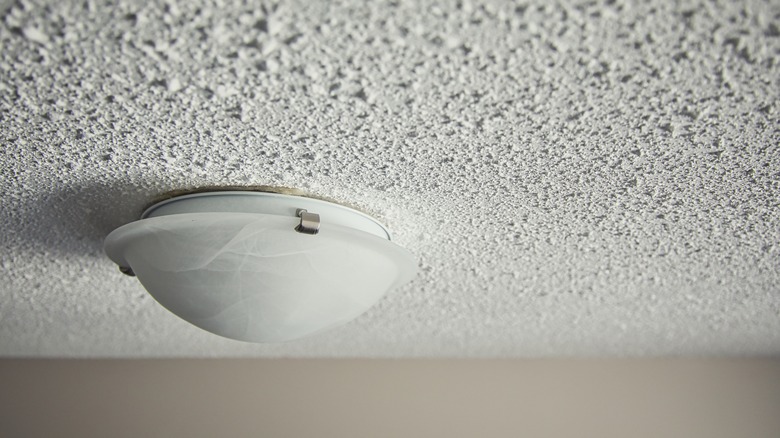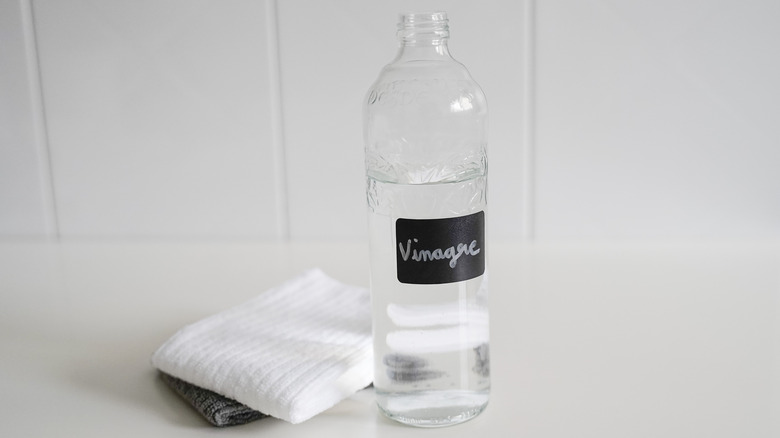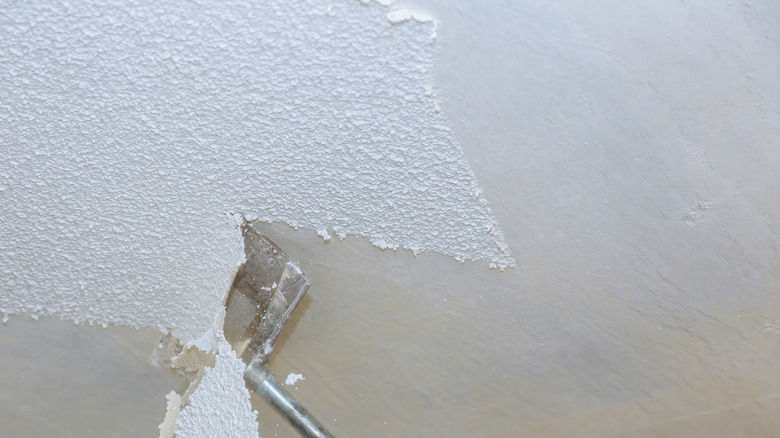The Vinegar Solution For Removing Glossy Paint From Your Textured Ceiling
Textured popcorn ceilings may not be as popular in the home as they once were, but many homeowners still love their appearance and the benefits they provide. Some of the top reasons why homes have popcorn ceilings is because they can cover up imperfections and provide a room with increased insulation and sound absorption. They even offer some fire resistance as well. Popcorn ceilings are made by spraying or applying a drywall joint compound to a ceiling, which usually includes a combination of calcium carbonate and polystyrene. This helps generate a bumpy surface that provides a textured look.
Additionally, some textured ceilings have been painted with glossy paint that can attract even more attention than standard popcorn ceilings. Even if you like popcorn ceilings, this glossy paint can make them stand out a bit too much. If you want to remove this glossy paint, there are options for doing so. Vinegar is a versatile cleaning tool and can be used to help remove paint from many types of surfaces, whether a popcorn ceiling or another type. Vinegar contains acetic acid, which, according to patent documentation on Google Patents, boasts the same paint-stripping power as formic acid. That said, vinegar only has a concentration of 4 to 6% acetic acid, so don't expect the same results as a from a commercial paint stripper. But if used correctly, vinegar can make it easier for you to remove paint from a textured ceiling and restore a more subtle appearance.
Using vinegar to remove paint or popcorn ceiling material
If you're planning to remove glossy paint from a ceiling, you'll first need to boil vinegar in a saucepan or microwave it. Add ¼ cup of white vinegar to 1 gallon of water before heating the mixture. You'll then need to apply this solution onto the paint and let it soak the surface for at least 15 to 30 minutes. You can then scrub and peel to remove the softened paint. Rinse it away when you're done. This will work on many different materials. Vinegar is useful when removing paint from metal surfaces as well as from concrete and glass. Although it doesn't work quite as well, you can also use it on wood, if needed.
Keep in mind that instead of removing glossy paint, many homeowners prefer to remove a popcorn ceiling entirely. This can also be done with the help of vinegar as well. For this purpose, you'll need to mix one part vinegar with 10 parts water and add the mix to a spray bottle. You'll need to spray the ceiling thoroughly and let it soak for at least 10 to 15 minutes. You can then use a mudding knife or a scraping tool to remove the popcorn ceiling paint and material. To ensure the ceiling is saturated, you may need to keep spraying the vinegar solution as you work. When you're finished, you can add a layer of drywall topping compound and use a sander to ensure that the ceiling is as smooth as possible.
Proceed with caution on older popcorn ceilings
Although popcorn ceilings offer some significant benefits, many of them have a major problem that most people aren't aware of. Depending on how and when a popcorn ceiling was made, it may contain asbestos. This problem is especially common with popcorn ceilings that were made between 1945 and 1980 but also with many others that were made until the 1990s. Although the use of asbestos in ceiling finishes was banned in 1977, materials with asbestos continued to be used afterward to an extent.
Any time you disturb your popcorn ceiling in any way, it's essential to be mindful of this, especially if your textured ceiling is on the older side. Even scratching the ceiling while cleaning it could release harmful dust particles into the air that can be detrimental to your health. It's best to get your popcorn ceiling inspected by a licensed asbestos professional or to use a DIY asbestos test kit before you add or remove paint, or before you remove it entirely. This should help protect the well-being of you and your family.


